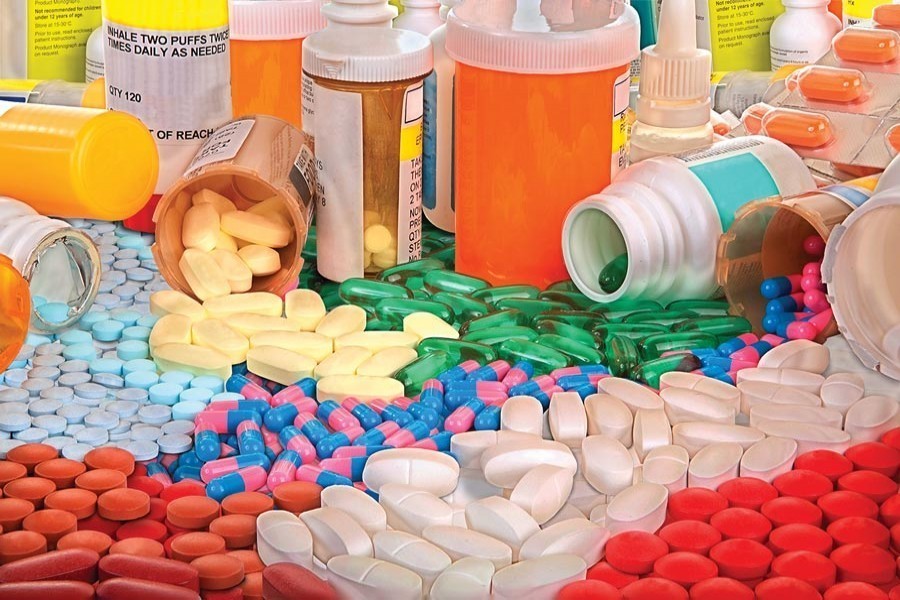
Published :
Updated :

Bangladesh aspires to become a global player in pharmaceutical business; it has started exploring the overseas medicine markets and quite a few local manufacturers have already penetrated several of these markets. The local pharma executives have claimed to export medicines to more than one hundred countries. While Bangladesh made medicines have landed mostly in the low and middle income countries (LMIC), several highly regulated markets including the USA, the UK, Australia and Canada have been accessed as well- thanks to the high quality of locally produced medicines, determination and persistence of pharmaceutical professionals, and the ongoing and strong government policy support to groom this industry.
According to Bangladesh Export Promotion Bureau's report (Commodity-wise Data of Countries for Period: July-June 2019-2020), Bangladesh exported pharmaceuticals to 118 countries. However, this number may disguise the facts that in 55 of these countries Bangladesh's export amounted to only 100,000 US$ or less; only in 21 countries, export value exceeded one million US$.
World's pharmaceutical market is very large, admittance is highly competitive for newcomers and the product registration process to many major destinations is exhaustive and painfully slow. However, this is a decidedly gratifying and lucrative business for those who can endure the compression, jump over the spiked fences and make it to the end. This high profit margin comes at a very high price with hefty investments needed for manpower, machines and materials. Unlike a low value added low profit sector like Bangladesh' garments, the pharma sector needs employment and engagement of polished, skilled and shrewd professionals, huge investment in land, factory building and machineries, a fail-safe quality assurance system all throughout the production process-- from sourcing of raw materials to packaging, distribution and storage. Along with these are needed superior marketing talent and carefully fashioned and impeccably executed business strategy since the current export leaders in the international pharma market are well-resourced, highly experienced, and supported by veteran international marketing specialists. The current major players have shaped strong brands for their companies and respective countries, while Bangladesh is merely a fledgling in this great game.
Success in pharma business is highly treasured and the export brings big bucks as well as enormous prominence for a company and a country. A handsome amount of export earnings from a new and different sector will make the Bangladesh economy robust and this diversification may help reduce its singular and high-risk dependence on garments. The existing non-garment export sources include jute and jure products, leather and leather products, agricultural products and frozen fish. However, nothing could come close to garments and all have been performing sluggishly and pitifully. The government is eager to see another wholesome export sector to depend on.
Despite a sluggish and inconsequential start, the growth in pharmaceuticals export from Bangladesh is showing some light and the local companies appear to be trying their best and have been able to steadily add several new countries each year to their 'send to' list.
Industry critics may justifiably argue that the pharmaceutical export growth curve for Bangladesh should have been much steeper and the export volume is still too low to cause great optimism. Bangladesh is positioned nowhere close to even a mid-ranking medicine exporter in the world; rather the country is still bringing more medicines in than what it is sending out. In 2018, Bangladesh was ranked 71st on the list of 134 countries that export medicines whereas it was ranked 129 on the list of 213 countries that import.
Industry leaders and advocates remain quite discreet about explaining what is behind this accelerated growth of imports compared to exports; they have suggested nothing so far about finding ways on how to thwart this uncomfortable trend. With so many local pharma giants declaring to start exporting, Bangladeshi medicines to almost all remote corners of the globe, one would justifiably wonder how come the country still has so much to import.
Identifying the major players and markets is the first step for an in-depth evaluation and understanding of the world's pharma market. The total pharmaceutical product export in the world was valued at US$ 636 billion and import at US$ 667 billion in 2019. Figures below show the top exporters according to data made available by http://www.worldstopexports.com/ that used data from Central Intelligence Agency, The World Factbook Field Listing: Imports - Commodities, International Trade Centre, Trade Map and Investopedia, Net Exports Definition.
In the league of exporters, only 17 countries dominate by controlling 90 per cent of medicine exports whereas rest of the countries carry 9.89 per cent share. Germany and Switzerland are the chief actors with 14 per cent and 13 per cent global share exporting pharmaceuticals worth US$ 90 billion and US$ 83 billion respectively. USA, Ireland, Belgium and Netherlands are close competitors each controlling about 8 per cent of export share. Among the Asian countries, India triumphed with 3 per cent share followed by China 1 per cent and Singapore 1 per cent. No country from Africa and Latin America made it to this list.
The pharmaceutical companies in Bangladesh have a long way to go. They have focused their attention to the overseas markets only recently and appear to be still exploring where to focus, stabilise and expand their businesses.
Hasnat M. Alamgir is Professor, Department of Pharmacy, East West University, Dhaka, Bangladesh.


 For all latest news, follow The Financial Express Google News channel.
For all latest news, follow The Financial Express Google News channel.